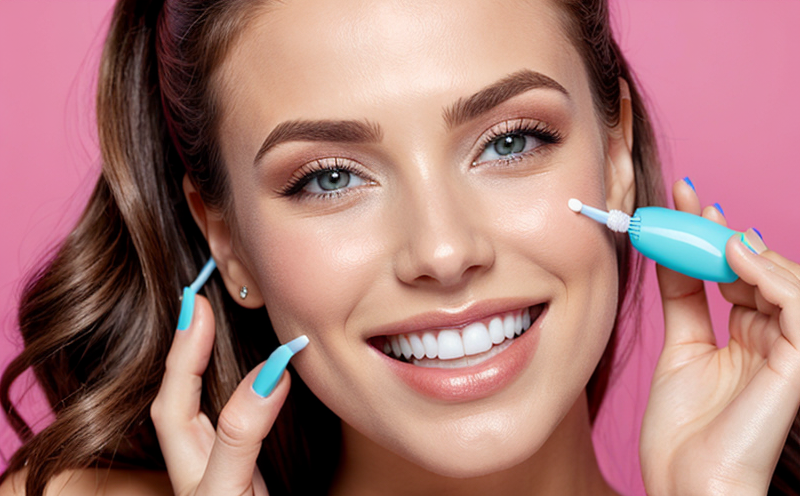Clinical Testing of Anti-Cavity Cosmetic Toothpastes
The clinical testing of anti-cavity cosmetic toothpastes is a critical step in ensuring the efficacy and safety of these products. This process involves rigorous evaluation to determine how effectively a toothpaste can prevent dental caries, promote oral health, and improve overall dental hygiene.
Anti-cavity toothpastes typically contain fluoride compounds that help remineralize enamel and inhibit bacterial growth, which are key factors in preventing cavities. The testing protocol for these products is designed to mimic real-world usage conditions as closely as possible, ensuring that the results accurately reflect the product's performance under typical consumer use.
The first step in clinical testing involves selecting a diverse group of participants who represent the target demographic. These individuals undergo baseline assessments including dental exams and plaque scores to establish a starting point for comparison. Participants are then divided into groups, with one group receiving the test toothpaste while another receives a control product (often an industry-standard fluoride toothpaste).
The testing period typically lasts several months, during which participants follow their regular oral hygiene routines but use either the test or control toothpaste daily. Throughout this time, detailed records are kept on plaque accumulation, gingivitis scores, and the incidence of cavities.
At the conclusion of the trial, the data is analyzed to determine if there are statistically significant differences between the groups. This analysis includes comparing plaque levels, gingivitis severity, and cavity rates. If the test toothpaste shows a reduction in cavities compared to the control, it passes the clinical efficacy criteria.
Additionally, safety assessments are conducted throughout the trial. These include monitoring for any adverse reactions or side effects that could be attributed to the toothpaste. Any issues identified during this phase are thoroughly investigated and addressed before final approval.
The results of these tests are then compiled into comprehensive reports. These documents detail the methodology used, the findings from each stage of testing, and recommendations for further development if necessary. Compliance with relevant standards such as ISO 3609:2018 and FDA guidelines ensures that the testing process adheres to internationally recognized best practices.
For manufacturers aiming to enter international markets, successful completion of these clinical tests is essential. It provides a robust foundation for regulatory submissions and helps ensure market acceptance across different regions.
Quality and Reliability Assurance
The quality assurance process in the testing of anti-cavity cosmetic toothpastes is multifaceted, encompassing strict adherence to standardized protocols, regular calibration of instruments, and rigorous data validation. Ensuring that every test conducted meets industry standards not only enhances product reliability but also builds consumer trust.
Calibration of equipment used in these tests, such as plaque indices meters and gingivitis scoring tools, is critical. This ensures that measurements taken are accurate and consistent across all trials. Regular calibration checks help maintain the integrity of data collected during testing.
Data validation plays a pivotal role in maintaining quality assurance standards. Independent verification of test results by different analysts helps identify any discrepancies or errors early on. This process also includes statistical analysis to ensure that the data presented is reliable and representative of real-world conditions.
Compliance with international standards such as ISO 3609:2018 ensures that testing methods are consistent with recognized best practices globally. Adherence to these standards not only enhances credibility but also simplifies regulatory compliance in various countries.
The use of advanced analytical techniques like Fourier Transform Infrared Spectroscopy (FTIR) and X-ray Diffraction (XRD) helps in characterizing the active ingredients within toothpastes, providing insights into their purity and effectiveness. These tools are essential for verifying that products meet specified formulations and concentrations required by regulatory bodies.
By implementing robust quality assurance measures at every stage of development, manufacturers can ensure that their anti-cavity cosmetic toothpastes consistently deliver on promised benefits while maintaining high standards of safety and efficacy.
International Acceptance and Recognition
- ISO 3609:2018: This international standard sets out the requirements for the formulation, labeling, and testing of dental hygiene products, including anti-cavity toothpastes. Compliance with this standard is crucial for gaining acceptance in markets that adhere to these guidelines.
- US FDA Regulations: The Food and Drug Administration mandates specific criteria for over-the-counter (OTC) drug products used in oral care. Meeting these requirements ensures compliance with U.S. regulations, which are often a benchmark for other countries.
- EU Cosmetics Regulation 1272/2006: This regulation governs the safety and efficacy of cosmetic products within the European Union. Compliance helps manufacturers navigate the complex regulatory landscape in EU member states.
- Japanese Dental Association Standards: These standards are recognized for their stringent requirements, making adherence essential for brands targeting Japanese markets.
- Australian/New Zealand Therapeutic Goods Administration (TGA): Products must meet TGA standards to be sold legally in Australia and New Zealand. Compliance ensures that products comply with local safety and efficacy regulations.
Meeting these international standards not only facilitates market entry but also enhances the reputation of the manufacturer, fostering trust among consumers worldwide.
Competitive Advantage and Market Impact
The successful clinical testing of anti-cavity cosmetic toothpastes can significantly enhance a brand's competitive edge in the market. By demonstrating clear efficacy through robust scientific evidence, brands can differentiate themselves from competitors offering less effective or unproven products.
Achieving international acceptance and recognition based on these tests opens up new markets for the product. It allows manufacturers to tap into diverse consumer bases across different regions, thereby expanding their customer base and increasing market share.
Moreover, such rigorous testing can lead to innovations within the product line. The insights gained from these trials often inspire improvements in formulations, packaging, or marketing strategies, further strengthening brand loyalty and appeal.
The enhanced trust that comes with successful clinical tests also contributes positively to brand reputation. Positive reviews and recommendations from satisfied customers reinforce this positive image, encouraging repeat purchases and word-of-mouth referrals.
In conclusion, the comprehensive approach taken in the clinical testing of anti-cavity cosmetic toothpastes not only ensures product quality but also plays a crucial role in establishing competitive advantages and driving market growth.





